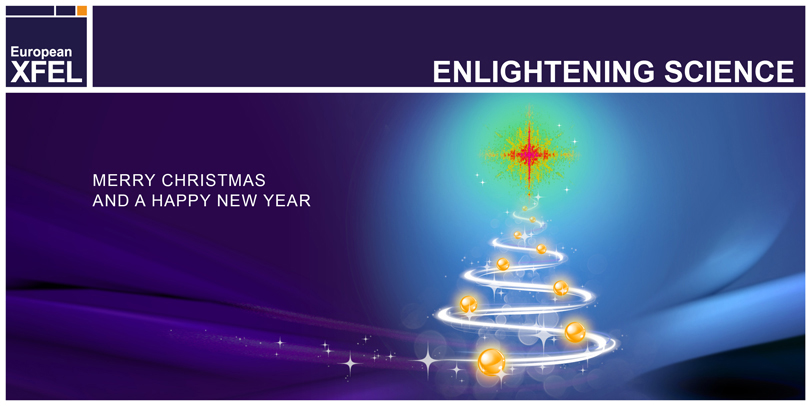End of the year message by the Managing Directors
Massimo Altarelli and Claudia Burger look back at the past year and forward to the challenges ahead of us.
Dear colleagues, dear friends of the European XFEL,
The end of the year is traditionally a good time to look back at the events of the previous twelve months and to look forward to the challenges ahead in the new year.
In a complex and technically demanding project being implemented at many laboratories and companies throughout Europe and even beyond, there are many areas in which progress is very good and that give us good reasons for optimism, and a few critical areas that should receive a high level of attention.
In 2013, we were very glad to see the end of underground construction, with no substantial trespassing of the planned time and budget boundaries and without any serious accidents. This important milestone was celebrated in June with a small ceremony attended by our staff, representatives of local authorities, and some of our shareholders. The just-completed tunnels were then available for the infrastructure installation works, which have been making vigorous progress. Also during the year, the first aboveground buildings in Bahrenfeld and Osdorfer Born have been moving towards completion.

The massive production of components for the nearly 2 km linear accelerator and 0.5 km of undulators went into full swing. In the first produced batches of the required 800 superconducting accelerating cavities, nearly all show a performance exceeding the specification for the acceleration gradient. This is a very good omen for the reliable performance of the accelerator.
As the infrastructure installation for the injection systems makes progress, the first accelerator component—the electron gun—was installed and started commissioning with radiofrequency in December. This is also an important milestone to be underlined.
The undulator group has successfully tested and fully tuned 52 of the 91 required 5m undulator segments. First prototypes of the very demanding 80 cm long high quality mirrors for the photon transport systems give solid indication that the specifications, pushing the state of the art, can be met. Two small area tiles of the future LPD and AGIPD imaging detectors demonstrated the acquisition speed required to keep up with the high number of pulses that our machine will generate. The LPD system also underwent the first tests using the FEL pulses of the LCLS in Stanford. Both electron and photon beam diagnostic systems reported good progress; in particular, photon diagnostics intensity and polarization monitors were successfully tested at FEL sources. The development of experimental laser systems and of data acquisition hardware and software are also giving good reasons for optimism in the achievement of the ambitious goals of the respective work packages.
There are, however, critical items in the production of sub-components for the accelerating modules and in their assembly. The management of the European XFEL and the Accelerator Consortium coordinator DESY, in close cooperation with our shareholders, are developing countermeasures to mitigate schedule problems.
On the front of user interest, it is important to mention that two user consortia in the area of life sciences, the Serial Femtosecond Crystallography and the Integrated Biology Infrastructure at the European XFEL, obtained sufficient funding to start construction of their infrastructure in the experiment hall and of the laboratory facilities at the same time as the baseline equipment.
All these achievements are made possible by the hard work and the dedication of our staff—now approaching 200 people—and of many colleagues at DESY, in the laboratories participating in in-kind contributions, and in user consortia. To all of them, our sincere thanks and our best wishes for a happy 2014!
Massimo Altarelli Claudia Burger
Managing Directors